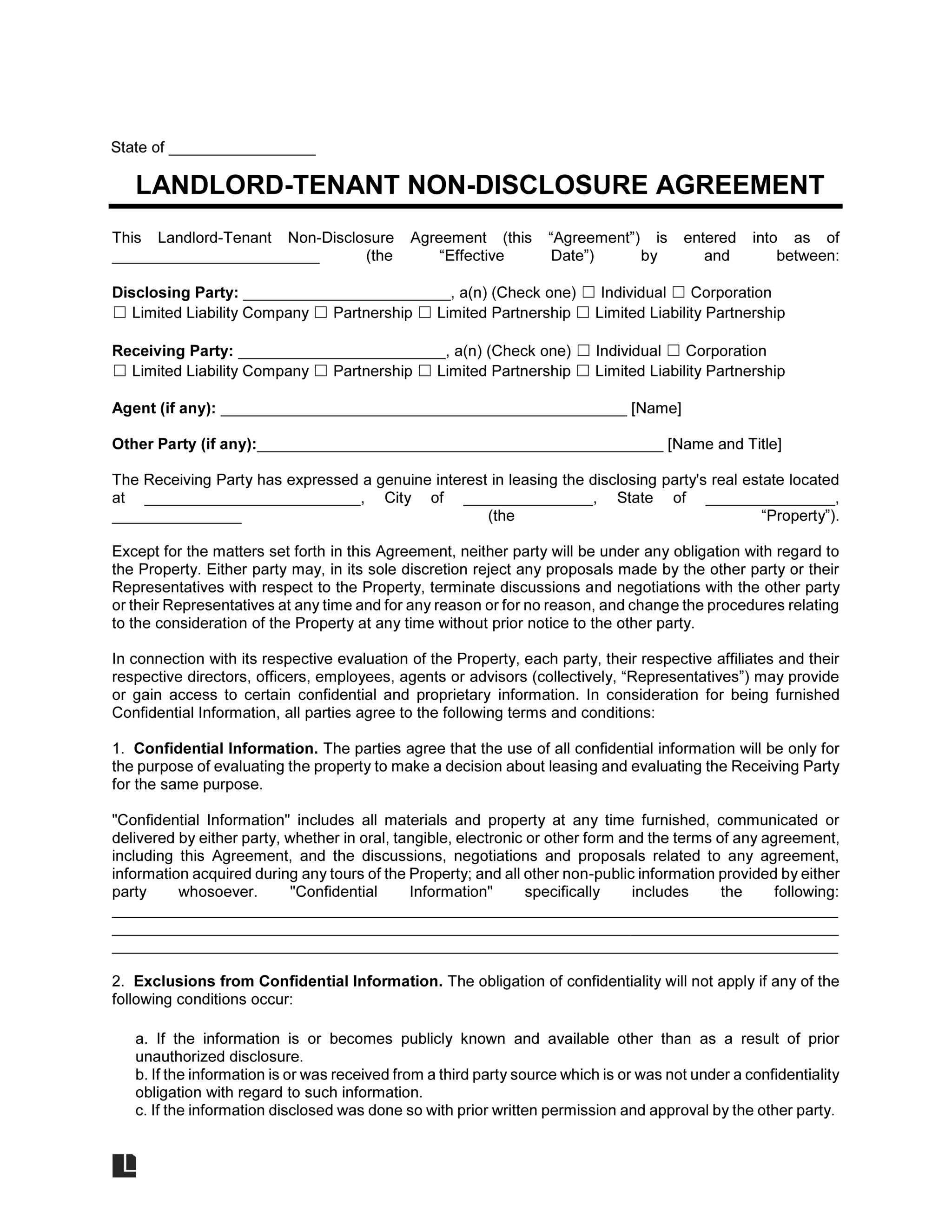A landlord-tenant non-disclosure agreement is a document that prohibits a tenant from disclosing confidential information a landlord shares with them. This document lets the landlord share details that could encourage a prospective tenant to sign a lease.
Supplemental Form
If you’re looking to sell a property rather than rent it, use a real estate buyer NDA so you can share information with a buyer with peace of mind.
What Is a Landlord-Tenant Non-Disclosure Agreement?
A landlord-tenant NDA is a contract that allows a landlord (the disclosing party) to share information with a potential tenant (the receiving party) and simultaneously protect the sensitive nature of the information.
For example, a landlord may have confidential information about planned capital improvements, property revenue, or taxes, giving them an advantage over competing landlords.
The landlord with such information may want to share it with a prospective tenant to give them more details about a property available for rent and aid their decision.
However, a landlord may want a potential tenant to keep this information private because if the information was disclosed to another property owner, the landlord may lose their competitive advantage. An NDA grants the landlord this ability.
How to Write a Landlord-Tenant NDA
Writing an NDA between a landlord and tenant can be a simple process when you follow these steps:
Step 1 – Download a template in PDF or Word format.
Step 2 – List the parties’ information. Clearly define the landlord and the tenant, ensuring to list the former as the disclosing party and the latter as the receiving party.
Step 3 – Identify the relevant rental property. List the address and provide a description.
Step 4 – Define the confidential information you’re sharing as the landlord. Ensure the information is confidential and not data that’s publicly available. For example, you may want to ensure that planned capital improvements, taxes, and investors’ identities or financial statuses remain private.
Clarify that you (the landlord) have to give written permission before the tenant can share any information as long as the agreement is still in effect.
Step 5 – State the agreement’s duration. Specify how long the tenant should keep the disclosed information confidential. If you’d like the tenant to keep the information confidential until the termination of the agreement in the future, note this in the document.
Step 6 – Include the name of the state whose governing laws a court will use in case issues arise with the tenant’s confidentiality.
Step 7 – Have the tenant or the representative party sign the document. Include your signature as the landlord as well.
Frequently Asked Questions
How Long Does a Landlord-Tenant Non-Disclosure Agreement Last?
A landlord can decide how long an NDA will last. A typical period is between one and five years. Landlords often choose their desired agreement duration depending on factors like current market conditions and the information they decide to disclose.
What Happens If a Tenant Breaks an NDA?
A landlord should review the terms of the non-disclosure agreement to ensure the tenant has broken agreed-upon conditions. If the landlord can prove the tenant has broken the terms, they can pursue damages in court according to the state laws where the two parties originally formed and signed the agreement.
What Voids a Landlord-Tenant NDA?
An NDA may be void if the following provisions are true:
- It contains terms that are too broad for the tenant to follow.
- It contains confidential information concerning illegal activities that harm others.
- It contains information that’s public knowledge.


